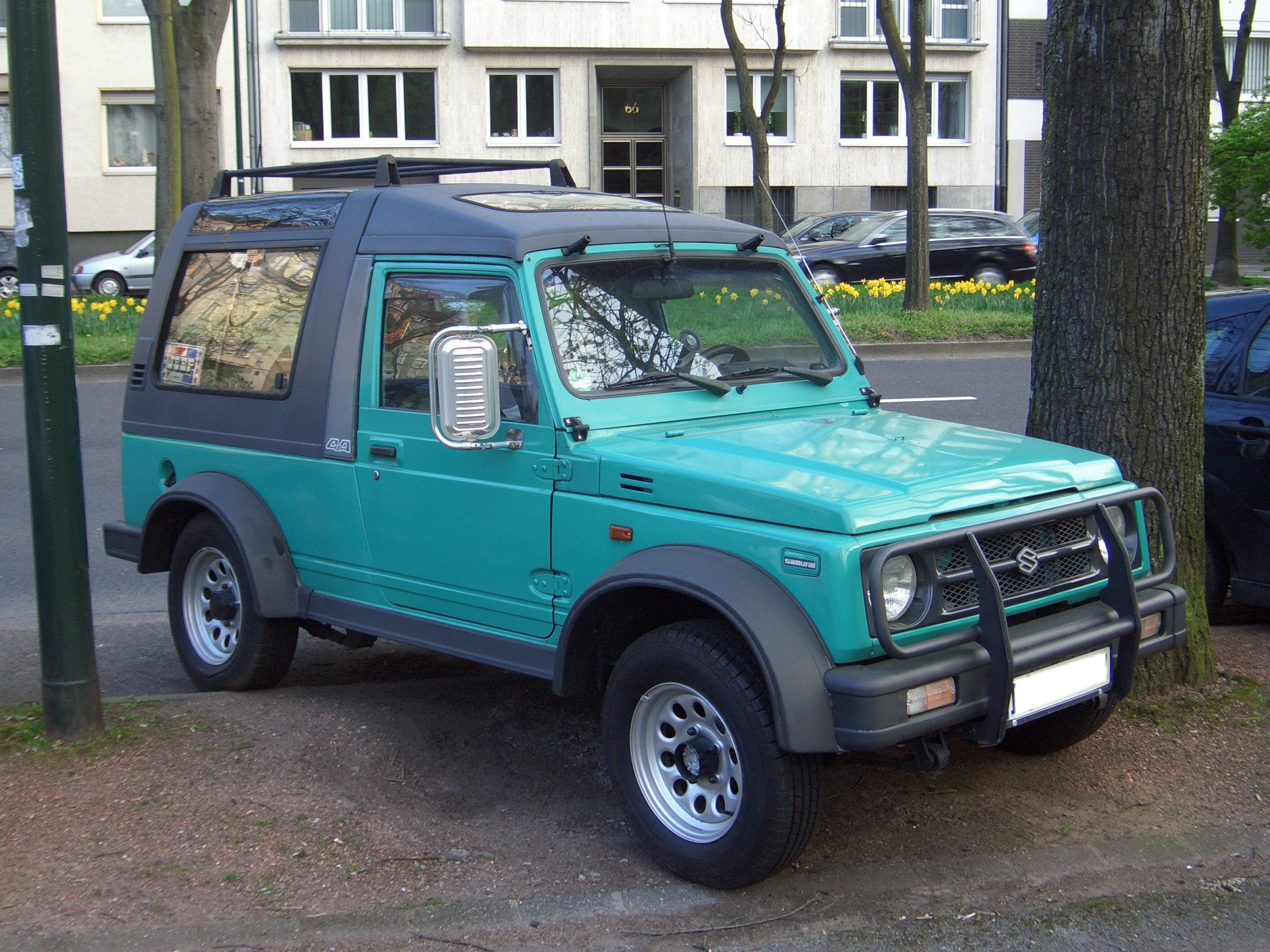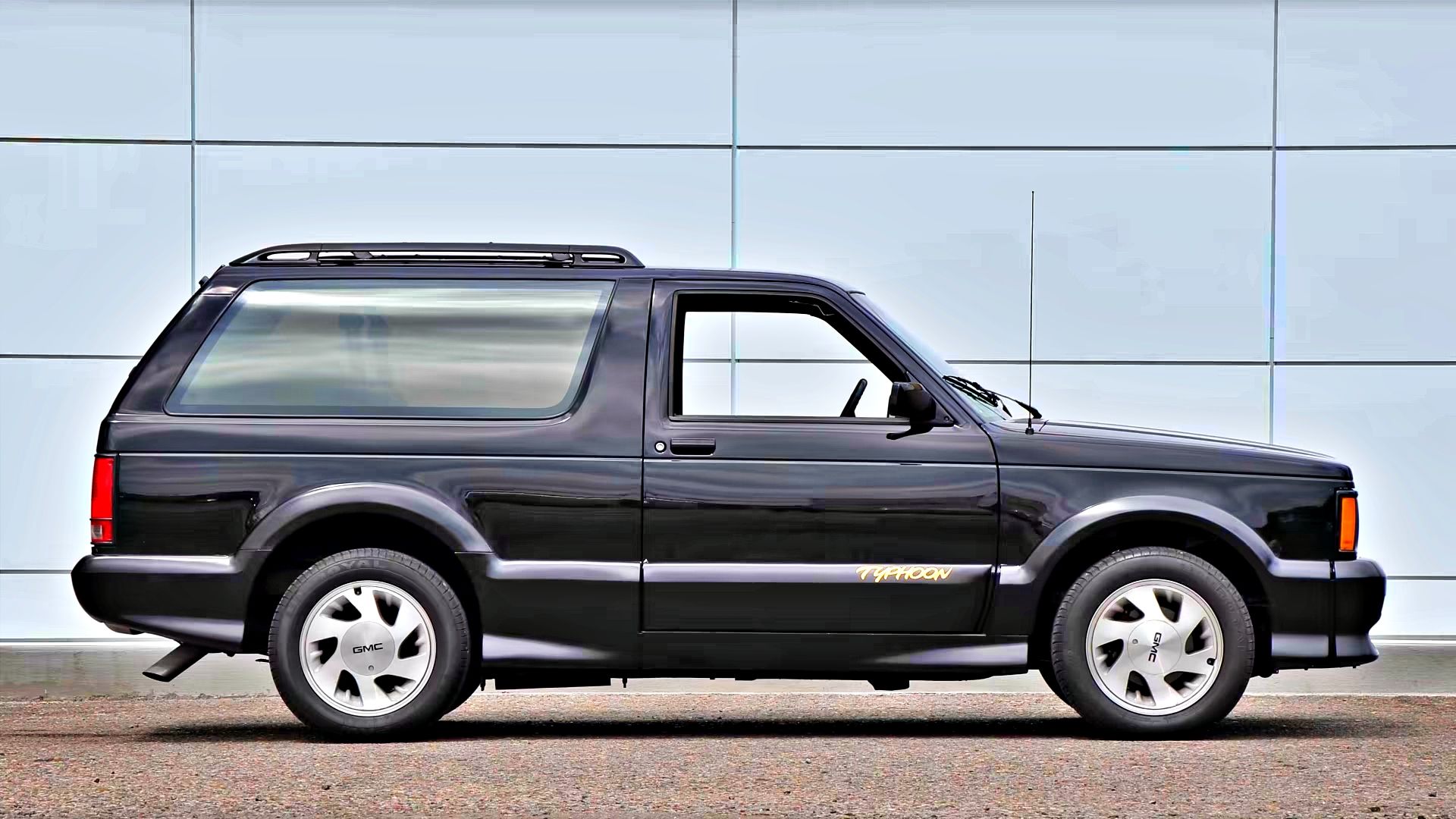Overview of 90s SUVs

The 1990s marked a significant evolution in the SUV market, moving beyond the rugged utility vehicles of the past. Manufacturers recognized the growing desire for both off-road capability and on-road comfort, leading to a surge in innovation and diversification within the segment. This period saw the rise of several iconic models that defined the decade’s aesthetic and functionality.
The 1990s SUV landscape was characterized by a shift in consumer demand, moving beyond the purely utilitarian aspects of previous decades. Aesthetics began to play a more significant role, with designs evolving to accommodate more refined styling while still maintaining a sense of robustness. This period also witnessed a gradual increase in technological advancements, although these were not as pronounced as in subsequent decades.
Key Models and Manufacturers
The 1990s saw a diverse range of manufacturers enter or expand their presence in the SUV market. Leading manufacturers like Jeep, Toyota, Ford, and Land Rover continued to dominate, releasing updated models and introducing new designs to meet the changing demands of consumers. The emergence of newer players, like Subaru and Isuzu, further diversified the choices available to buyers. Models like the Jeep Cherokee, Toyota 4Runner, Ford Explorer, and Land Rover Discovery were popular choices, reflecting the era’s design language and capabilities.
Design Aesthetics and Features
90s SUVs often featured boxy, angular designs, reflecting the prevalent aesthetic trends of the time. While ruggedness was still a key component, some models began incorporating more rounded edges and softer lines, demonstrating a shift towards a more refined appearance. Features like two-wheel drive and four-wheel drive options were common, alongside various engine configurations. Interior space and comfort were also prioritized, particularly in models targeting a broader consumer base.
Comparison with Earlier and Later Decades
Compared to SUVs from the 1980s, 90s models exhibited a more sophisticated design language and improved interior comfort. The 1980s SUVs were generally more utilitarian and had a less refined aesthetic. Later decades (2000s and beyond) saw a significant increase in technological features, such as advanced safety systems, sophisticated infotainment systems, and enhanced engine performance. This contrasted with the 90s, which largely focused on basic functionality and exterior design.
Technological Advancements
Technological advancements in 90s SUVs were limited compared to modern models. While there were some improvements in engine efficiency and safety features, these were not as substantial as in later decades. Airbags were becoming more common, and some models featured anti-lock braking systems (ABS), but these were still relatively basic compared to today’s advanced safety systems. Modern SUVs boast sophisticated electronic systems, advanced driver-assistance features, and sophisticated infotainment displays that were largely absent in the 90s.
Comparison Table of Popular 90s SUV Models
| Model | Price | Features | Performance |
|---|---|---|---|
| Jeep Cherokee | $18,000 – $25,000 (USD, approximate) | Rugged exterior, basic interior, available 4WD, various engine options | Solid off-road capability, decent on-road performance, depending on engine choice |
| Toyota 4Runner | $22,000 – $30,000 (USD, approximate) | Spacious interior, reliable engine, 4WD system, good cargo space | Strong off-road ability, reliable performance, fuel economy varied by engine |
| Ford Explorer | $20,000 – $28,000 (USD, approximate) | Growing popularity, comfortable interior, various engine options, more refined design compared to some competitors | Good blend of on-road and off-road capabilities, performance varied by engine and trim level |
Market Trends and Influences
The 1990s witnessed a dramatic surge in SUV popularity, transforming the automotive landscape. This surge wasn’t spontaneous; rather, a confluence of economic, social, and technological factors fueled the demand for these versatile vehicles. Understanding these trends provides critical context for appreciating the design and appeal of 90s SUVs.
The burgeoning popularity of SUVs in the 1990s was heavily influenced by several intertwined market forces. A growing desire for larger, more rugged vehicles coincided with a shift in consumer values and perceptions of personal freedom.
Key Market Trends
Several key market trends shaped the design and popularity of 90s SUVs. These trends included a significant increase in outdoor recreational activities, a rising middle class seeking larger vehicles, and an evolving perception of safety and utility. The growing interest in outdoor activities, from camping to hiking, contributed to the need for vehicles that could handle rough terrain. This demand for capability translated into designs emphasizing off-road prowess and carrying capacity.
Economic and Social Factors
Economic prosperity, particularly in the United States, played a pivotal role in the 1990s SUV boom. A strong economy translated into increased disposable income for consumers, making larger, more expensive vehicles a viable option. Furthermore, a rising middle class sought vehicles that offered both comfort and status. This consumer desire for status often aligned with the perception that SUVs offered a more luxurious and commanding driving experience.
Evolving Consumer Preferences
Consumer preferences in the 1990s significantly impacted SUV sales. The emphasis on personal freedom and exploration, often associated with outdoor adventures, directly influenced the design choices of manufacturers. The desire for spacious interiors and enhanced functionality resonated with families and individuals alike, fostering a greater demand for vehicles that could accommodate diverse needs.
Impact of Fuel Efficiency Standards
Fuel efficiency standards, or the lack thereof, during the 1990s, had a considerable impact on SUV design. The absence of stringent fuel efficiency regulations allowed manufacturers to prioritize features like robust engines and large, heavy frames over fuel economy. This focus on power and capability often came at the expense of fuel efficiency, a trend that was gradually addressed later in the decade.
Top 3 Factors Influencing 90s SUV Popularity
| Factor | Description | Impact |
|---|---|---|
| Strong Economy | Increased disposable income and a growing middle class | Higher purchasing power and demand for larger, more expensive vehicles. |
| Shifting Consumer Values | Emphasis on personal freedom, outdoor recreation, and family needs | Demand for vehicles that offered functionality, space, and capability. |
| Relaxed Fuel Efficiency Standards | Manufacturers prioritized power and capability over fuel economy. | Led to designs emphasizing ruggedness and off-road ability, impacting fuel efficiency. |
Popular Models and Manufacturers
The 1990s witnessed a surge in SUV popularity, driven by evolving consumer preferences and technological advancements. This era saw the rise of iconic models that defined the SUV landscape, influencing design and features for years to come. Manufacturers capitalized on this demand, offering diverse models tailored to various needs and budgets.
The top manufacturers dominated the market, introducing innovative designs and features that differentiated their vehicles. These manufacturers leveraged advancements in engine technology, safety features, and interior comfort to attract a wider audience. Competition was fierce, leading to continuous improvements and the introduction of new models.
Top 5 SUV Manufacturers
The 1990s SUV market was largely dominated by a handful of manufacturers who successfully captured the attention of consumers with innovative models. These manufacturers understood the evolving needs of buyers, delivering vehicles that catered to both practicality and style.
- Toyota: Known for its reliability and durability, Toyota offered several popular SUV models during the 1990s. The 4Runner, with its rugged design and off-road capabilities, was a standout. Its boxy shape and robust construction provided a sense of confidence and dependability. The RAV4, introduced in 1994, was a pioneering compact SUV, showcasing Toyota’s commitment to fuel efficiency and maneuverability. The 4Runner’s legendary off-road prowess, coupled with the RAV4’s practicality, cemented Toyota’s position as a key player in the SUV market.
- Ford: Ford’s Explorer was a significant player, showcasing a powerful V8 engine and a spacious interior. The Explorer’s robust design and performance made it a popular choice for families and adventurers. Ford’s focus on both performance and practicality resonated with buyers. The Explorer’s boxy design and larger dimensions differentiated it from other models. The Ford Bronco, another iconic model from this period, was known for its robust construction and capability in off-road terrain.
- Jeep: Jeep maintained its reputation for ruggedness and off-road capability with models like the Grand Cherokee. The Grand Cherokee offered a blend of on-road comfort and off-road prowess. Its distinctive boxy styling, a heritage feature of Jeep vehicles, and the powerful engine options showcased the brand’s commitment to adventure and exploration. The Cherokee was another successful model from Jeep, offering a more compact and accessible option in the Jeep lineup.
- Honda: The CR-V, a compact SUV introduced by Honda in the 1990s, provided a balance of fuel efficiency and practicality. The CR-V’s boxy shape and versatile interior space set it apart. Honda focused on building a reliable, practical SUV that balanced fuel efficiency and interior space, appealing to families and commuters. The Honda Passport was another model that saw success, offering a larger footprint compared to the CR-V.
- Nissan: The Pathfinder was a popular choice, emphasizing spaciousness and practicality. Nissan capitalized on the growing demand for family-oriented SUVs. The Pathfinder’s larger dimensions and robust design reflected its focus on accommodating families. It provided a blend of comfort and capability, catering to the needs of a growing market.
Key Design Elements
Several key design elements distinguished the top 90s SUVs. Robust construction and boxy shapes were common, reflecting a focus on durability and off-road capability. Large ground clearances and four-wheel drive systems were often incorporated, demonstrating a commitment to handling diverse terrains. The increasing use of high-quality materials and improved interior designs further enhanced the appeal of these vehicles.
Features and Performance Comparison
Different models from the same manufacturer exhibited variations in features and performance. For example, the Ford Explorer’s larger engine and heavier build compared to the Ford Bronco demonstrated a trade-off between off-road capabilities and on-road performance. Similarly, the Toyota 4Runner’s robust suspension and larger size contrasted with the Toyota RAV4’s compact design and fuel-efficient engine. These variations in design and engineering catered to different consumer preferences and needs.
Top 5 Best-Selling 90s SUVs by Manufacturer
| Manufacturer | Model | Sales Rank | Key Features |
|---|---|---|---|
| Toyota | 4Runner | 1 | Rugged, off-road capable, reliable |
| Ford | Explorer | 2 | Powerful V8 engine, spacious interior, robust design |
| Jeep | Grand Cherokee | 3 | On-road comfort, off-road capability, distinctive styling |
| Honda | CR-V | 4 | Fuel-efficient, practical, compact design |
| Nissan | Pathfinder | 5 | Spacious interior, family-oriented, robust design |
Cultural Impact and Significance

The 1990s saw a significant shift in the perception of SUVs, moving beyond their utilitarian roots to become ingrained in popular culture. This transformation was fueled by factors like rising disposable incomes, a desire for increased personal freedom, and the portrayal of SUVs in various media outlets. This period marked a turning point, as SUVs transitioned from practical vehicles to symbols of status and lifestyle.
The 1990s saw SUVs morph from purely functional vehicles into powerful cultural symbols. They were no longer simply transportation; they became statements about aspirations, lifestyle choices, and a sense of personal freedom. Their presence in popular culture further solidified their place as desirable objects, fostering a particular image that resonated with a broad audience.
Popular Culture Portrayals
The image of SUVs in the 1990s was significantly shaped by their presence in popular culture. Movies, television shows, and music videos frequently featured these vehicles, often highlighting their ruggedness, spaciousness, and perceived status. This consistent presence in media contributed to the cultural phenomenon of SUVs becoming more than just vehicles; they were symbols of success and adventure.
Notable SUV Appearances in Popular Culture
The proliferation of SUVs in the 1990s media landscape is evident in their frequent appearances in various forms of entertainment. These appearances often contributed to shaping public perception of these vehicles.
| Medium | Vehicle | Context | Significance |
|---|---|---|---|
| Film | Ford Explorer | The 1990s saw the Ford Explorer frequently featured in action-oriented films, often used for chases or in off-road sequences. This highlighted the perceived ruggedness and capability of the vehicle. | The Explorer’s portrayal in action films reinforced its image as a powerful and capable vehicle, often representing freedom and adventure. |
| Television | Jeep Grand Cherokee | The Jeep Grand Cherokee often appeared in television shows as part of the plot, highlighting the vehicle’s ruggedness and its role in various scenarios, from family adventures to crime dramas. | The Grand Cherokee’s consistent presence on TV shows contributed to its perceived image as a versatile and desirable vehicle for various lifestyles, showcasing its suitability for different settings. |
| Music Videos | Toyota 4Runner | In some music videos of the 1990s, the Toyota 4Runner was prominently featured, often conveying a sense of adventure or a specific lifestyle. | Music videos utilized the 4Runner to depict a certain lifestyle or aspiration, further associating the vehicle with a particular image and cultural context. |
Technical Specifications and Features

The 1990s witnessed a surge in SUV popularity, driven by a desire for ruggedness and practicality. This popularity was intrinsically linked to the technical advancements and features available in these vehicles, which catered to evolving consumer needs. These advancements, while not as sophisticated as modern technology, laid the groundwork for the SUVs of today.
The technical specifications of 90s SUVs reflected a balance between off-road capability and on-road comfort. Engine choices, safety features, and interior design all played crucial roles in shaping the driving experience. While lacking the advanced safety systems of modern vehicles, these SUVs offered a certain level of protection and comfort that appealed to a broad spectrum of drivers.
Engine Types, Horsepower, and Fuel Efficiency
Engine options in 90s SUVs ranged from powerful V6s to robust V8s. These engines, while often less fuel-efficient than modern counterparts, provided ample power for tackling various terrains. The horsepower ratings varied considerably across different models, reflecting the specific design and intended use of each vehicle.
| Model | Engine Type | Horsepower | Fuel Efficiency (mpg) |
|---|---|---|---|
| Ford Explorer (1995) | 4.0L V6 | 190 hp | 18-20 city/24-28 highway |
| Jeep Cherokee (1995) | 4.0L I6 | 150 hp | 18-20 city/22-25 highway |
| Toyota 4Runner (1995) | 4.0L V6 | 215 hp | 18-20 city/24-26 highway |
Note that fuel efficiency figures can vary based on driving conditions and specific vehicle configurations.
Safety Features
Safety features in 90s SUVs were often basic compared to today’s standards. Airbags were becoming more prevalent, but were not standard across all models. Anti-lock brakes (ABS) were increasingly available but not universally present. Rollover protection systems were still developing and were not widely incorporated. Passive safety features, like seatbelt designs, were generally present, but advanced driver-assistance systems were not yet in use.
Interior Design and Comfort Features
Interior design in 90s SUVs focused on functionality rather than cutting-edge technology. Materials were often durable but might not have had the same level of sophistication as later models. Comfort features varied significantly between different brands and models. Some SUVs offered features like power windows and seats, while others were more basic. The emphasis was typically on providing enough space for passengers and cargo, without the extensive array of comfort features that are now commonplace.
Technology Comparison
The technology in 90s SUVs differed dramatically from modern vehicles. Digital instrument panels were rare, and infotainment systems were non-existent. Navigation systems, advanced driver-assistance features, and connectivity options were not available. Modern SUVs offer sophisticated technology for improved safety, driver convenience, and connectivity. The evolution from the basic technology of the 1990s to the advanced systems of today highlights the rapid progress in automotive engineering.